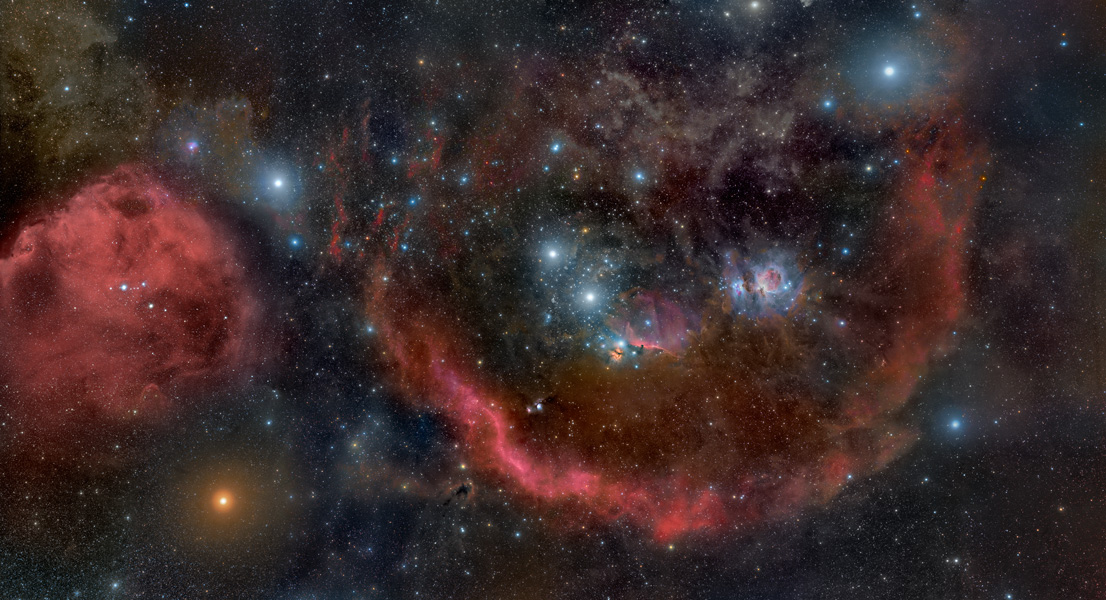
Constellations Index
"Why did not somebody teach me the constellations,
and make me at home in the starry heavens, which are always overhead,
and which I don't know to this day?"
Thomas Carlyle

 |
| |
and make me at home in the starry heavens, which are always overhead, and which I don't know to this day?" Thomas Carlyle |
| Getting Started with the Stars | When are constellations visible? | Basic Celestial Phenomena |
| The 88 officially-recognized constellations | ||
|---|---|---|
Getting Started
- How did constellations get their names?
- How to read a star chart
- Begin with these constellations:
- Anytime: The Big Dipper in the constellation Ursa Major the Big Bear
- Summer: Cygnus the Swan and the Summer Triangle.
- Winter: Orion the Hunter and the Winter Hexagon.
- What do the Greek letters mean when they are used to label the bright stars of a constellation?
- When are the constellations visible?
- A star chart for any time of night and every season of the year: How to use a planisphere.
- An excellent introduction to the constellations visible each night of the year: Chet Raymo's 365 Starry Nights.
Practice Constellation
The hunter Orion is one of the most easily spotted constellations, especially in winter, and is visible from every inhabited part of the globe. His belt of three bright stars in a line is quite distinctive (and lies nearly on the celestial equator). A sword hanging from his belt at first sight looks like three stars, but the middle one is ill-defined (with binoculars you can tell that it is not a star, but a fuzzy region--as we are now told, a giant cloud of luminous gas, 20,000 times the diameter of our solar system, called the Great Orion Nebula). Orion's right shoulder is Betelgeuse (pronounced roughly "beetle-juice"), a red giant that is one of the largest stars in the sky (capable of being discerned as an actual disk rather than a point of light with large telescopes; if Betelgeuse were placed at the position of our Sun, the Earth and Mars would fall well inside its surface).Orion the hunter appropriately faces the red eye (star Aldebaran) of the adjacent bull (constellation Taurus); Albrecht Dürer represented him thus. His dog (constellation Canis Major) walks at his lower right, containing the brightest star in the sky (Sirius). Orion's lower left foot (Rigel) is a bright bluish-white star at a vertex of the so-called "Winter Hexagon." The Bull Taurus contains the bright cluster of six or seven naked-eye stars called the Pleiades.
In Egyptian mythology, Orion was the abode of Osiris, the mythical pharoah who invented the arts of agriculture before being slain by his animal-headed brother, Set. Osiris conquered death and, once resurrected, came to reside in Orion (his wife, Isis, dwelling near Sirius). Jewish tradition eventually identified Orion with Nimrod, the "mighty hunter before the Lord" spoken of in early Genesis. To the ancient Syrians, Arabians, and even Ptolemy, Orion was the Giant; to the Chinese Orion was (with Taurus) the White Tiger; to the Vikings Orwandil. (R. H. Allen, pp. 303ff.) Or, from Ireland, a modern tale of how St. Patrick sent him to hunt in the heavens begins thus...
O'Ryan was a man of mightMore on Orion
Whin Ireland was a nation,
But poachin' was his heart's delight
And constant occupation....
Charles G. Halpine
Study Question:
Read Walt Whitman's poem, When I Heard the Learn'd Astronomer, and go outside tonight to look up in perfect silence at Orion. Try to find the Pleiades, and the Winter Hexagon.
 |  |  |  |
 |  |  | |
| Top |
Fonte:
NASA
HyperNoteo



